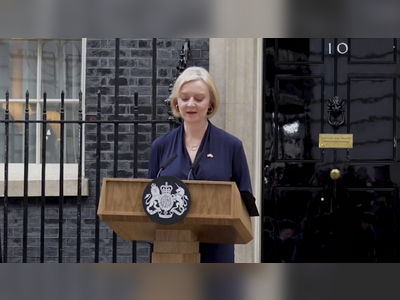
UK Cross-Border E-Commerce: VAT and Customs Duties Explained for Sellers
Essential guidance on how value-added tax and import duties apply when shipping goods to UK buyers from abroad
When an e-commerce seller ships goods from outside the United Kingdom to a UK buyer, two taxes may apply: value-added tax (VAT) and customs duties.
Import duties are designed to protect domestic industries by making imported goods more expensive, and they generally cannot be reclaimed by the importer.
VAT is a consumption tax that ensures buyers pay tax at the same rate whether they buy locally or from abroad.
For goods located outside the UK and sold to UK consumers, the rules depend on the value of the shipment.
If the shipment value is £135 or less (the low-value goods threshold), import duties do not apply, but VAT must be collected at the point of sale by the seller or marketplace and remitted to HM Revenue & Customs (HMRC).
If the shipment value exceeds £135, import VAT and potentially customs duties are due when the goods enter the UK.
The party responsible for paying import VAT and customs duties is the importer of record – typically the UK buyer if the seller opts for “Delivered at Place” (DAP) terms, or the seller if they agree to “Delivered Duty Paid” (DDP).
Under DAP the seller delivers to the UK border and the buyer handles clearance; under DDP the seller acts as importer and must register for UK VAT and account for duties and taxes.
For business-to-business (B2B) sales, if the UK buyer is VAT-registered, the “reverse-charge” mechanism may apply—meaning the buyer accounts for VAT and the seller need not collect it.
In business-to-consumer (B2C) sales, the seller or the online marketplace is responsible for collecting VAT at checkout for low-value goods or coordinating with the courier for import VAT on higher-value consignments.
Online marketplaces now have specific liability: From June 2025 HMRC guidance confirms marketplaces are liable for VAT when they facilitate sales by overseas businesses on goods located in the UK at the point of sale.
This includes carrying out due diligence on overseas sellers, checking their VAT registration status, and retaining evidence of these checks.
The £135 threshold is under government review amid concern about the influx of low-value imports.
The Finance Ministry is evaluating whether to reduce or remove the exemption to bring the UK into line with the European Union and United States, which have already moved in that direction.
The outcome may reshape how duties and VAT apply to cross-border e-commerce.
For sellers shipping to the UK, key compliance steps include identifying who the importer of record is, registering for UK VAT if required, applying the correct tax treatment based on consignment value and buyer type, and ensuring that customs declarations and EORI (Economic Operators Registration and Identification) numbers are in place.
Failure to do so may result in delays, additional costs or penalties.
In an evolving post-Brexit landscape, understanding these rules is essential for any business aiming to sell across UK borders and reach British consumers efficiently and compliantly.
Import duties are designed to protect domestic industries by making imported goods more expensive, and they generally cannot be reclaimed by the importer.
VAT is a consumption tax that ensures buyers pay tax at the same rate whether they buy locally or from abroad.
For goods located outside the UK and sold to UK consumers, the rules depend on the value of the shipment.
If the shipment value is £135 or less (the low-value goods threshold), import duties do not apply, but VAT must be collected at the point of sale by the seller or marketplace and remitted to HM Revenue & Customs (HMRC).
If the shipment value exceeds £135, import VAT and potentially customs duties are due when the goods enter the UK.
The party responsible for paying import VAT and customs duties is the importer of record – typically the UK buyer if the seller opts for “Delivered at Place” (DAP) terms, or the seller if they agree to “Delivered Duty Paid” (DDP).
Under DAP the seller delivers to the UK border and the buyer handles clearance; under DDP the seller acts as importer and must register for UK VAT and account for duties and taxes.
For business-to-business (B2B) sales, if the UK buyer is VAT-registered, the “reverse-charge” mechanism may apply—meaning the buyer accounts for VAT and the seller need not collect it.
In business-to-consumer (B2C) sales, the seller or the online marketplace is responsible for collecting VAT at checkout for low-value goods or coordinating with the courier for import VAT on higher-value consignments.
Online marketplaces now have specific liability: From June 2025 HMRC guidance confirms marketplaces are liable for VAT when they facilitate sales by overseas businesses on goods located in the UK at the point of sale.
This includes carrying out due diligence on overseas sellers, checking their VAT registration status, and retaining evidence of these checks.
The £135 threshold is under government review amid concern about the influx of low-value imports.
The Finance Ministry is evaluating whether to reduce or remove the exemption to bring the UK into line with the European Union and United States, which have already moved in that direction.
The outcome may reshape how duties and VAT apply to cross-border e-commerce.
For sellers shipping to the UK, key compliance steps include identifying who the importer of record is, registering for UK VAT if required, applying the correct tax treatment based on consignment value and buyer type, and ensuring that customs declarations and EORI (Economic Operators Registration and Identification) numbers are in place.
Failure to do so may result in delays, additional costs or penalties.
In an evolving post-Brexit landscape, understanding these rules is essential for any business aiming to sell across UK borders and reach British consumers efficiently and compliantly.









